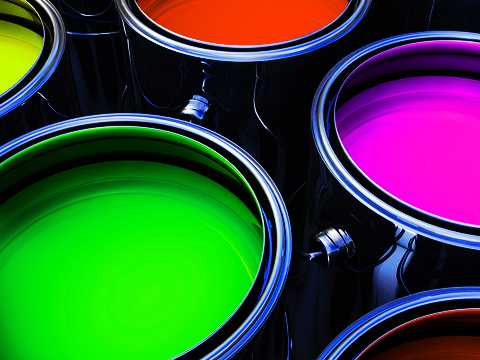
When you are learning about color, three concepts that you will need to grasp and add to your vocabulary are: hue, value and saturation.
Hue is synonymous with the color itself, such as blue, green, yellow, orange, red. On a color wheel, the yellow, blue and red are described as the primary colors.
Value describes the lightness or darkness of a color. And saturation refers to the brightness or dullness of the color.
To the physicist, color is nothing more than wavelengths of light. If you combine all of the frequencies of light together, the result is white light. If you pass that white light through a prism, the light is divided into the spectrum of colors.
The receptors in our eyes detect three of the frequencies of light: red, green and blue. Our brain responds to the messages from these receptors to create our perception of color.
The Color Wheel
Think of the traditional color wheel as the spectrum of colors arranged in circle. The value of a color wheel is as tool to aid you in mixing of colors. The three primary colors on wheel are red, yellow and blue.
Secondary Color. By mixing two adjacent colors on the wheel, you create a secondary color. Mixing red and yellow produces orange. Yellow and blue creates green. And, red and blue yields purple.
Tertiary Color. By combining a primary and an adjacent secondary color on the color wheel, you produce a tertiary color. For example, mixing red and orange produces red orange. In naming the tertiary colors, the primary color is always given first, and then the secondary color.
Triad. The term triad refers to three colors, which are equally spaced on the color wheel, such as the three primary colors: red, blue and yellow.
The Natural Value of a Color
When you are trying to decide which color to use with a particular background color, one consideration is the natural value of the color. Any color has an inherent lightness or darkness of it. White has a value of 10. Yellow, for example, can have a value of 8. Red can have a value of 5 or 6. The value of purple is 7 or 8. Black has a value of 0.
Every “hue” or color can have a range of values. You can change the value of any color by adding either white or black to it. Just remember that when you mix black or white with another color, you diminish the color’s “intensity”, which describes the purity of a color.
Saturation or chroma refers to the brightness or dullness of a color. High saturation of a particular color is called bright. Imagine the brightness of a color in the middle of the day. As the day gets closer to night, that color loses its intensity and gradually appears more grey. Finally, at nighttime, we see no colors; if we see anything at all, it appears black and white or grey. At this point, the color loses the characteristic which defines it as a color and it becomes achromatic.


